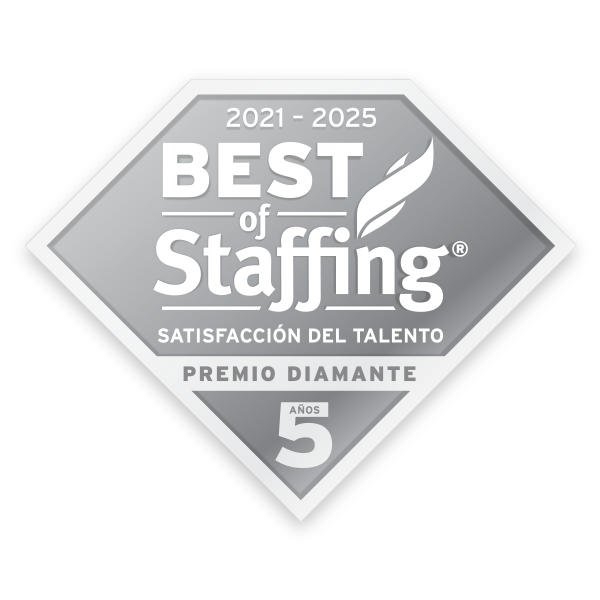
What parts of my business could AI run while I sleep? Which tasks should now be obsolete? Where will my people deliver the most value as AI becomes part of every workflow?
Every AI-forward leader asks these questions. Those who turn the answers into action move from “AI-forward” to “AI-first.” But most executives are too consumed by day-to-day operations to solve the future of work on their own.
So, companies buy tools without building talent. Leaders tell employees to “figure it out.” And entire teams label themselves “AI-first” long before they’ve earned it. These seven AI transformation tips separate the companies experimenting with AI from those operationalizing it at scale.
1. Establish Roles, Goals & Governance
AI transformation doesn’t begin with tools; it starts with people. The organizations moving the fastest are the ones that define strategic objectives and assign ownership of them.
That means establishing an internal AI council or governance group of leaders across teams. It means creating AI policies and communicating them across the organization. And it means connecting AI goals to business goals, not as an abstract vision but as a directional plan. You can’t measure progress toward your outcomes if they aren’t defined upfront.
Clear directives and guidelines protect the organization from ad hoc experiments becoming uncontrolled risk. Shape them before you invest in tools, not after. And bring in external experts to lead the way if you don’t have the people or time to do so on your own.
2) Create a Culture of Transparency
The hardest shift isn’t technical; it’s cultural. In AI-first organizations, leaders not only talk about AI adoption regularly; they model it publicly. When you share how AI benefits your own work, you normalize adoption and communicate that the standard applies at all levels.
In transparent cultures, employees are encouraged and asked to share how they’re applying AI, what’s working, and what isn’t. Create a space for reusable prompt templates, GPT libraries, company-wide demos, and open discussion.
When teams experiment in silos and keep their tools or processes secret, they hold each other back, duplicate efforts, and make mistakes. But when they study together and share their results, they empower one another. The key is to formalize collaboration and expectations.
3) Don’t Just Expect; Empower
One of the most common corporate missteps right now is assuming teams will “figure out” AI organically. They won’t. Not consistently. Not safely. And certainly not at scale.
Empowerment requires infrastructure: role-based training, hands-on coaching, internal champions, and continuous upskilling. It also means giving teams time to learn, explore, test, and implement. Without training, AI can be overwhelming. With training, it becomes instinctive.
AI-first companies don’t all issue mandates, but they do build capability. And they invest in people with the same urgency they invest in platforms.
4) Use AI Before You Act or Hire
AI-forward teams use AI. AI-First teams use AI first.
Before a brief is drafted, a campaign is launched, or a role is opened, someone asks: “Can we use AI to do this better, faster or cheaper?” And if no existing AI tool can help, the next question becomes, “Would it be possible and worthwhile to build one?”
To be clear: not every task demands AI integration, and humans remain essential to nearly every workflow. This is especially true for professionals in creative fields. However, when AI is the default starting point, people elevate and accelerate everything from ideation to execution.
5) Eliminate Tasks, Not Talent
Employees often worry that AI transformation translates into headcount reduction. And the reality is that AI is displacing jobs as well as creating them. However, growth-oriented leaders see AI as an opportunity to scale up, not down.
It’s not just getting work done; it’s empowering professionals to get more done and focus on what matters most. More often than not, AI handles the repetitive, administrative, time-consuming tasks that drain energy from skilled workers. What remains is the work humans excel at: creative thinking, relationship-building, and strategic decision-making.
More than ever, companies need skilled people to implement AI, review outputs, and do great work in a sea of slop. As we enter 2026, companies that reduced their headcount are already rehiring. And the advantage goes to businesses that restructure teams and redesign roles, not eliminate them.
6) Go From Elevating to Innovating
The first wave of AI transformation is all about elevation: faster workflows, fewer costs, and higher performance. But the organizations truly pulling ahead aren’t stopping there. They’re using AI to embrace new ideas, offerings, models and revenue streams.
For these forward-thinking companies, AI is changing more than how work is done; it’s transforming the work itself. Their businesses launch AI-powered products almost overnight. Their entrepreneurs are finally able to operationalize their most far-fetched ideas. And their creative teams are already using tomorrow’s tools to do work never before imaginable.
As the technology continues to advance, the companies that outperform will be the ones who don’t just improve their processes but rethink what’s possible.
7) Document Everything & Scale What Works
Org-wide AI transformation only happens when knowledge flows from early adopters to entire teams. AI-first companies empower this information exchange by documenting and sharing everything: workflows, playbooks, prompts, use cases, lessons learned, and more.
While it’s no easy feat, record keeping and staying organized will amplify your progress. When good workflows are captured, they become repeatable. When experiments are recorded, they become scalable. And when wins are shared, they’re replicated across the company.
AI implementation can’t be scaled through memory or enthusiasm. It can only be scaled through documentation and communication.
Final Thoughts
Siloed experimentation doesn’t make a company AI-forward, let alone AI-first. And meaningful transformation requires far more than a stack of tools.
It’s built on strategic planning, skilled people, scalable processes, and a culture of rethinking what’s possible. That means approaching the technology with more clarity, consistency, and intention than most of the market.
It’s not an easy standard to reach. But the leaders who get there won’t just stay competitive; they’ll set the pace everyone else is forced to follow.
On-Demand Webinar:
Designing an AI-First Organization
Learn how to structure your organization for success, which tasks to automate, and where today’s talent simply can’t be replaced.
 Win in an AI world.
Win in an AI world.
At Onward Search, we combine our in-house expertise with our expansive network to help forward-thinking companies become AI-first. Partner with our team to power your AI transformation with talent, training and enablement.
Request an AI Consult
Request services or additional information. We’ll respond within 24 hours to support you.












